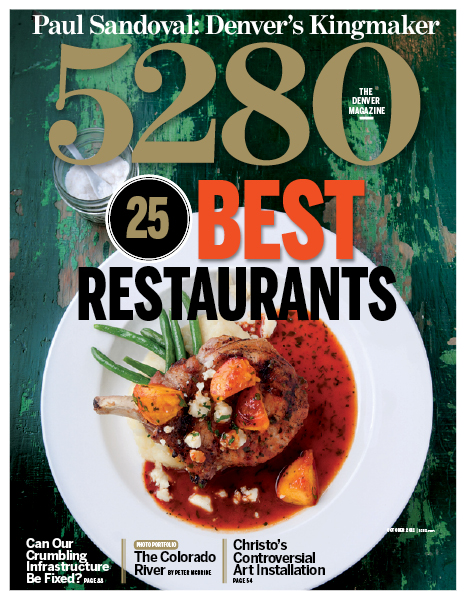The Local newsletter is your free, daily guide to life in Colorado. For locals, by locals.
Time and place can make or break a brew: Imperial stouts don’t suit sun-baked games of kickball. But as a reward for summiting Mt. Bierstadt in the winter? Heavenly—the motor-oil thickness, rich malt flavor, and alcohol content are all welcome after trudging several high-altitude miles in snowshoes. The same goes for brew containers. Whether it’s about flavor or functionality, the perfect container for enjoying beer at its best is out there. Allow us to give you a primer.
Can
Pro: Cans are lighter, more durable, and easier to pack than bottles. And there’s something refreshing about the pop of an aluminum tab when you bust one open.
Con: Colorado breweries are canning more beer, but selection is still limited.
You’re drinking: Ska Brewing’s bitter-but-still-smooth Modus Hoperandi, resting on a car bumper after biking, hiking, or snowboarding.
12-ounce bottle
Pro: Six-packs still reign supreme, making bottles your best bet for variety. Also, it’s almost ceremonial to pour a beer into a glass tilted to 45-degrees.
Con: Bottles can squash aroma; light can skunk your beer; and glass is frowned upon at spots like golf courses and parks.
You’re drinking: Hibernation Ale—Great Divide’s winter seasonal—and toasting Denver’s first snowfall.
Draft
Pro: Draft beer is as fresh and true to the brewer’s intentions as it gets. You should err on the hoppy side of things, as IPAs and pale ales pop on draft.
Con: Dirty beer lines and taps can introduce funky flavors and scents.
You’re drinking: Dry-hopped Colorado Kind Ale from Vine Street Pub while finding a spot for that pesky “Q” on the Scrabble board.
Nitro tap
Pro: Beer on nitro is like a too-thick-for-a-straw milk shake: rich, smooth, and creamy. Nitro-tapped brews accentuate the dark malts in stouts and porters.
Con: Nitro taps can be hard to come by and don’t work as well for lighter beers.
You’re drinking: Milk Stout by Left Hand Brewing Company. Two gulps in, you’ll skip dessert and order a second beer.
22-ounce bomber
Pro: Bombers are best for snagging big beers, special-occasion batches, and brewers’ experiments. These 22-ouncers are great for dinner parties; they can hang with wine and will impress your friends.
Con: Bombers can cost upwards of $15.
You’re drinking: Sips of the Reverend—Avery Brewing’s 10-percent Belgian Quadrupel ale—from a brandy-style snifter.
Growler
Pro: Growlers are the only way to take home tap-room-only beers and suds from breweries that don’t distribute. Besides, a 64-ounce jug of beer is a beautiful thing.
Con: Beer stored in a growler can go flat a day or two after it’s opened.
You’re drinking: That jug of Cara de Luna, a black German pale ale, that you filled at Crazy Mountain Brewing Company after a long day exploring Vail’s Blue Sky Basin.
Keg
Pro: Quantity. A standard half-barrel keg holds 165, 12-ounce beers. Clear your schedule.
Con: Quantity. A standard half-barrel keg holds 165, 12-ounce beers. Fork over the keys.
You’re drinking: A Solo cup of New Belgium’s crisp Mothership Wit in your friend’s backyard.









